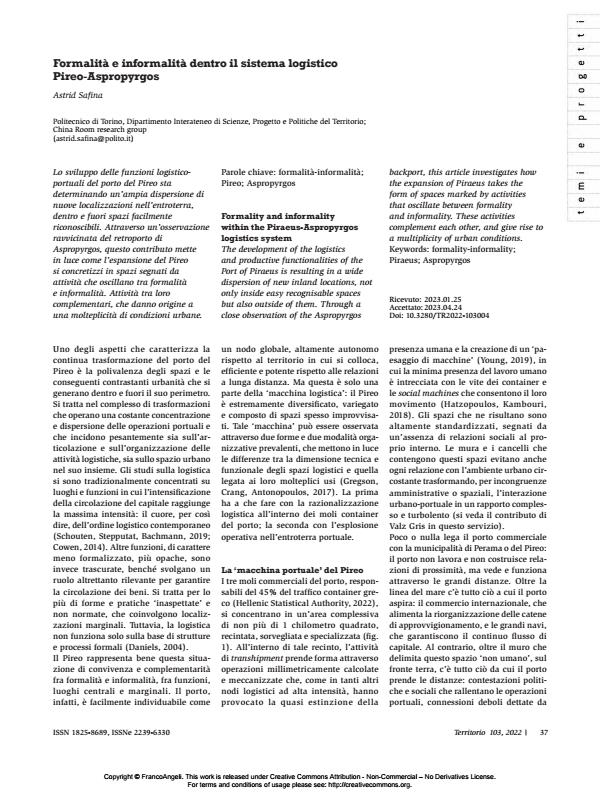Formalità e informalità dentro il sistema logistico Pireo-Aspropyrgos
Titolo Rivista TERRITORIO
Autori/Curatori Astrid Safina
Anno di pubblicazione 2023 Fascicolo 2022/103
Lingua Italiano Numero pagine 5 P. 37-41 Dimensione file 285 KB
DOI 10.3280/TR2023-103004
Il DOI è il codice a barre della proprietà intellettuale: per saperne di più
clicca qui
Qui sotto puoi vedere in anteprima la prima pagina di questo articolo.
Se questo articolo ti interessa, lo puoi acquistare (e scaricare in formato pdf) seguendo le facili indicazioni per acquistare il download credit. Acquista Download Credits per scaricare questo Articolo in formato PDF

FrancoAngeli è membro della Publishers International Linking Association, Inc (PILA)associazione indipendente e non profit per facilitare (attraverso i servizi tecnologici implementati da CrossRef.org) l’accesso degli studiosi ai contenuti digitali nelle pubblicazioni professionali e scientifiche
Lo sviluppo delle funzioni logistico- portuali del porto del Pireo sta determinando un’ampia dispersione di nuove localizzazioni nell’entroterra, dentro e fuori spazi facilmente riconoscibili. Attraverso un’osservazione ravvicinata del retroporto di Aspropyrgos, questo contributo mette in luce come l’espansione del Pireo si concretizzi in spazi segnati da attività che oscillano tra formalità e informalità. Attività tra loro complementari, che danno origine a una molteplicità di condizioni urbane.
Parole chiave:formalità-informalità; Pireo; Aspropyrgos
- The (in)visible face of global infrastructures: An exploration of logistics and informality from the ground up Astrid Safina, in Environment and Planning D: Society and Space /2025 pp.834
DOI: 10.1177/02637758251319671
Astrid Safina, Formalità e informalità dentro il sistema logistico Pireo-Aspropyrgos in "TERRITORIO" 103/2022, pp 37-41, DOI: 10.3280/TR2023-103004